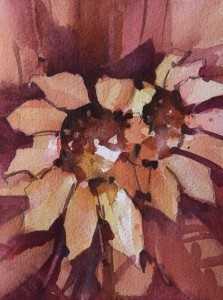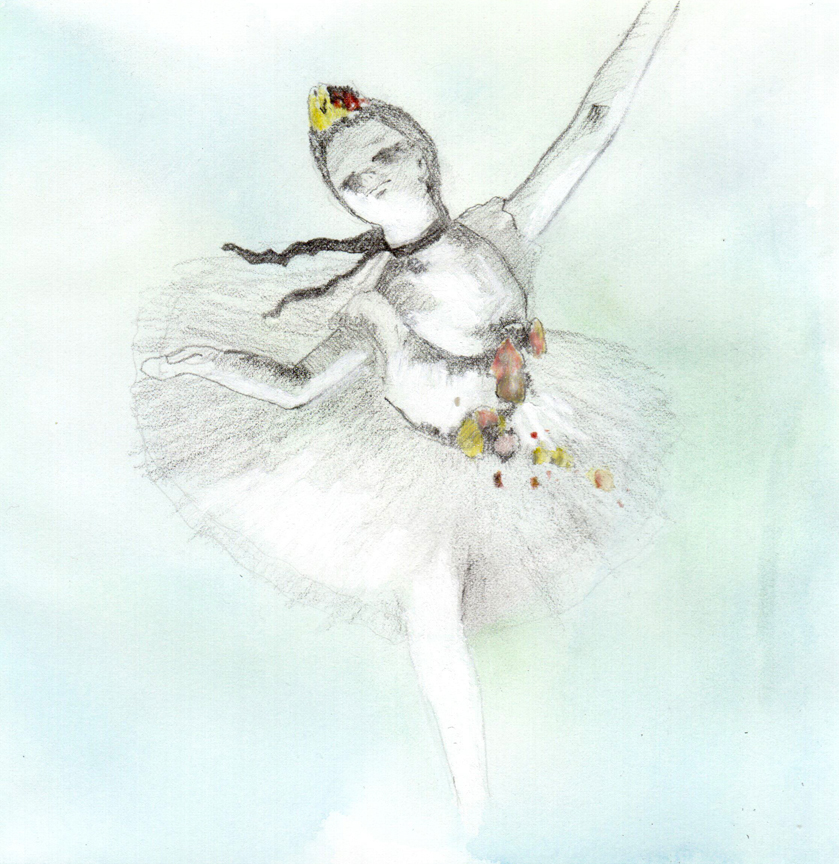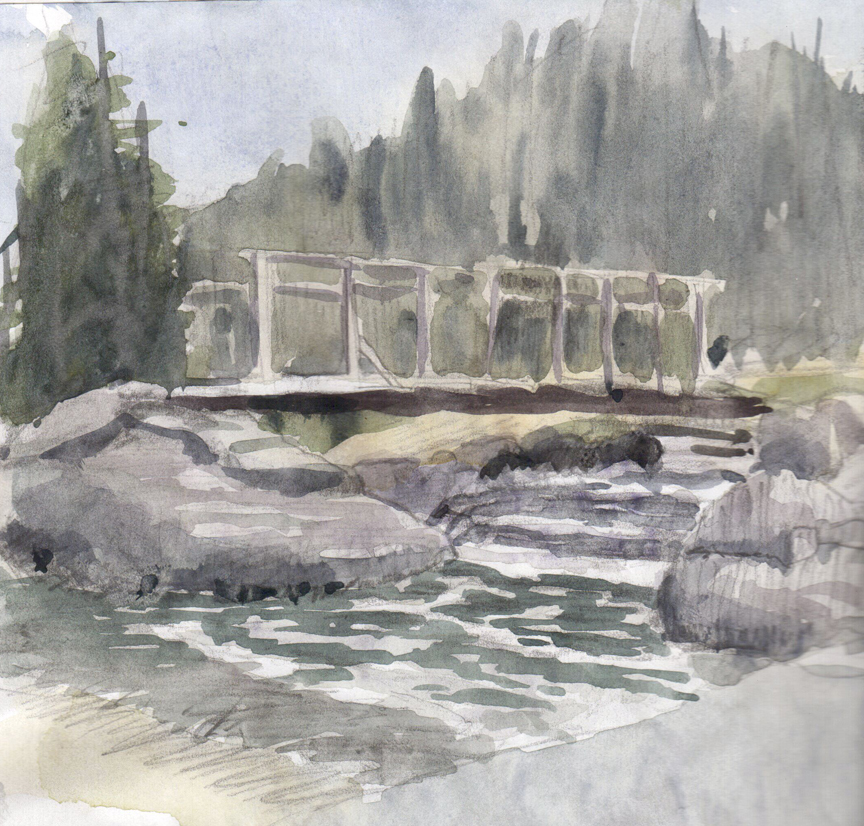 This is an image by David Shelvino. I just discovered him in Artist’s Magazine. He seems to do a lot of interesting figures situated in front of urban landscapes. He is a great figure drawer and creates very interesting and effective backgrounds that give his figures an unusual context.
This is an image by David Shelvino. I just discovered him in Artist’s Magazine. He seems to do a lot of interesting figures situated in front of urban landscapes. He is a great figure drawer and creates very interesting and effective backgrounds that give his figures an unusual context.
I used this image to practice the Dynamic Figure Drawing method that we’ve been studying in my drawing class and then to render it in a watercolour style. The original image was done in oil.
The style of watercolour painting that I’m using in this image is quite new for me and I’m loving it. I’m finally beginning to capture images the way I’ve always wanted to.
On a technical note, because the figure is generally a warm shape I’ve created shadows that are cool and I think that makes them more believable.
 I’ve had the opportunity to once again visit the Blob People. This really is a wonderful exercise. It’s also a very valuable exercise because at least in part you need to visualize effective negative shapes.
I’ve had the opportunity to once again visit the Blob People. This really is a wonderful exercise. It’s also a very valuable exercise because at least in part you need to visualize effective negative shapes.








